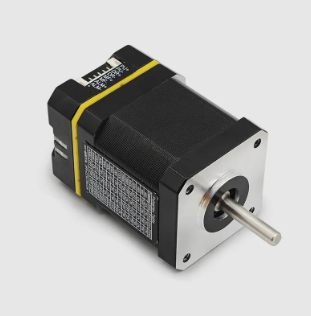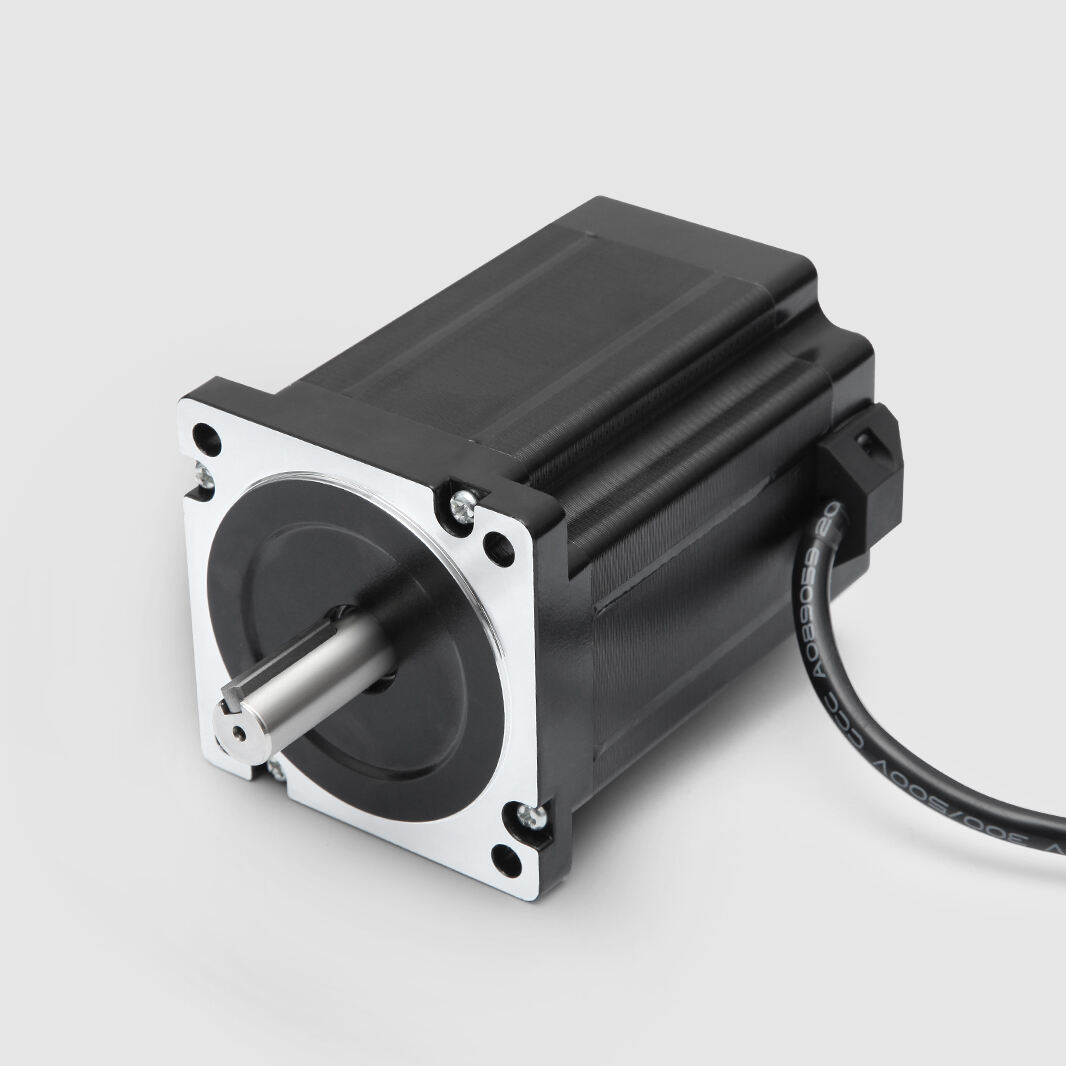A léptetőmotor-vezérlők túlmelegedésének okainak megértése
A hő túlterheléshez vezető főbb tényezők
A lépcsőmotor-vezetők gyakran különböző okokból térfelszállási problémákba ütköznek. Az egyik fő bűnös, ha túl sok áram áramlik, vagy mert a beállítás nem helyes, vagy valami mechanikusan blokkolja a mozgást. Ha helyesen állítjuk be a beállításokat, és rendszeresen ellenőrzünk, sokat tehetünk a baj elkerülése érdekében. Aztán ott van a környezet maga - ha már meleg, rossz a levegő keringése a berendezés körül, vagy nincs megfelelő fűtőfolyadék, a dolgok gyorsan rosszabbodnak. A jó hűtő megoldások itt nagyon fontosak, különösen a hosszú üzemidő alatt, amikor a folyamatos üzemelés hőfelhalmozódást okoz, ami idővel károsíthatja a alkatrészeket. Az üzemeltetőknek figyelniük kell ezeket a változókat, hogy cselekedjenek, mielőtt a hőmérséklet veszélyesen magasra emelkedne.
Hogyan utánozhatják a vezérlő IC meghibásodásai a kefézetlen egyenáramú motorvezérlők problémáit
Amikor a lépéses motorok vezérlőchipje romlik, általában olyan problémák merülnek fel, mint a kefé nélküli egyenáramú vezérlőkkel. A technikusok mindenféle furcsa viselkedést látnak a motoroktól manapság - néha egyszerűen leállnak dolgozni, más alkalommal kiszámíthatatlanul elterjednek. A két típusú motoron belüli elektronika közös, ami nagyon hasznos, ha megpróbáljuk kitalálni, mi a baj. Bárki, aki ezen rendszereken dolgozik, szokássá kell tennie, hogy ellenőrizze a vezérlőchipeket és a környező áramköröket is. A korai felismerés valóban sokat jelent, mert ha a problémákat kis korukban észleljük, később több órát megspórolunk a fejfájástól. A legtöbb üzlet úgy találja, hogy az ilyen megelőző magatartás csökkentheti a váratlan meghibásodásokat, és a berendezéseket zökkenőmentesen tudja működtetni a sokszorosan megszakított gyártási ciklusokon keresztül.
LSI Term Integráció: A BLDC motorhűtési elvek összekapcsolása léptetőmotor-vezérlőkkel
A lépcsőmotor vezérlői gyakran forrák, így ha megnézzük, hogyan kezelik a kefé nélküli egyenáramú motorok a hőmérséklet problémáit, akkor van értelme javítani. Az BLDC világában idővel kialakultak néhány szilárd megközelítések - mint például a speciálisan tervezett légáramlási csatornák és a nagy fém hőszivattyúk, amiket sok ipari berendezésen látunk. Ha lépéses rendszerekre alkalmazzák, ezek a technikák elég jól működnek a hőmérséklet ellenőrzésében, miközben az egész rendszert megbízhatóbbá teszik. Azoknál a gépeknél, amelyeknek folyamatosan kell működniük vagy nap mint nap nagy terhelést kell kezelniük, ez a fajta hőkezelés valóban kifizetődő. A hűtőberendezéseket alkalmazó gyártók általában hosszabb ideig tartanak a berendezésben, és kevesebb váratlan meghibásodás következik be, ezért egyre több vállalat kezd el alkalmazni őket a különböző gyártási környezetekben.
Villamos terhelés és árambeállítások értékelése
Túláram esetek diagnosztizálása háromfázisú egyenáramú motor elemzési módszerekkel
Amikor a lépcsőmotorok túláramlási problémáit vizsgáljuk, valójában sokat tanulhatunk a háromfázisú egyenáramú motorok elemzéséből. A technikák valódi betekintést adnak, hogy a feszültség és a áram hogyan kölcsönhat, ami segít észrevenni a bosszantó túlterheléseket, mielőtt elkezdik zavarni a lépéses vezérlőt. Vegyük például az oszcilloszkópot. Ezek a kényelmes eszközök lehetővé teszik a technikusok számára, hogy észrevegyék azokat a hirtelen áramcsúcsokat, amelyek egyébként észrevehetetlennek maradnak, amíg valami nem kezd forrásra, vagy a alkatrészek kopás jeleit nem mutatják. Az elektromos minták megértése nem csak elméleti dolog. Ez minden különbséget tesz, ha megpróbálunk korán megoldani a problémákat, és elkerüljük a költséges javításokat az úton.
Feszültségeltérési kockázatok a vezérlő tápegységekben
Amikor a feszültségszintek nem egyeznek, a lépcsőmotorvezetők komoly problémákkal néznek szembe, mert túl sok elektromos terhelést hoz létre, ami idővel elpusztíthatja őket. A megvizsgálás, hogy a tápegység jól működik-e a motoros vezető igényeivel, nem csak valami, amit időnként meg kell tenni, hanem nagyon fontos a dolgok zökkenőmentes működéséhez. A rendszeres tesztelés segít észrevenni a problémákat, mielőtt nagy fejfájássá válnának. A gépjárműszakemberek tudják, hogy ez fontos, ezért folyamatosan figyelik a rendszerüket, hogy minden helyesen álljon össze a bejövő áram és a vezető elvárásai között. Az ilyen típusú figyelem megakadályozza a veszélyes helyzeteket, amikor a komponensek ellenőrizetlen túlmelegedéssel járnak, miközben biztosítja, hogy a berendezés hosszabb ideig tart és jobban teljesít.

Mikroléptetési beállítások és termikus hatás
A mikrostepper javítja a lépéses motorok zökkenőmentes mozgását, de figyelnünk kell, hogy mi történik a hőtermeléssel. Amikor felerősítjük a lépésfelbontást, a motor magasabb frekvencián működik, ami valójában melegebbé teszi, mint általában. A hővel való megismerkedés nagyon fontos a megfelelő vezetéshez. Ez lehetővé teszi a mérnökök számára, hogy megtalálják a megfelelő pontot a rendszereikből való teljesítmény elérése között anélkül, hogy túl melegre kerülnének a dolgok. Ha a mikrostappokat megfelelően módosítják, a technikusok a megfelelő teljesítményt tudják fenntartani, miközben a hőmérsékletet kontroll alatt tartják. Ez a gondos megközelítés nemcsak megakadályozza a túlmelegedés okozta károsodást, hanem azt is jelenti, hogy a motorok hosszabb ideig tartanak, mielőtt kicserélniük kell őket.
Mechanikus alkatrészek és pozíció ellenőrzése
Csapágy súrlódásérzékelés kis BLDC motor karbantartásához hasonlóan
A csapágy súrlódásának figyelemmel kísérése nagyon fontos, mivel ez befolyásolja a motor működését és a hőmérsékletet. Ha megnézzük, hogy az emberek hogyan karbantartják ezeket a kis, kefé nélküli egyenáramú motorokat, jó tanulságokat kaphatunk, hogy a csapágyak hosszabb ideig tartsanak. A legtöbb üzlet csak rutinellenőrzéseket végez, ahol a súrlódás jeleit keresik, mielőtt a dolgok túl melegek lesznek és a motort is megrongálják. Egy egyszerű, de hatékony módszer az, hogy a csapkocsikat megfelelően olajozzák, és ne halmozódjanak fel szennyeződések, amit sok technikus már tesz, amikor apró BLDC egységeken dolgozik. Ezek az alapvető karbantartási lépések minden különbséget tesznek a berendezések élettartamának meghosszabbításában, miközben elkerüljük a költséges meghibásodásokat.
Tengelyigazítási ellenőrzési technikák
A tengely helyes elhelyezése nagyon fontos, ha a mechanikai alkatrészek stresszből mentesülnek, és elkerülhető a túlmelegedés. Számos módja van ennek a munkának, mint például a tárcsázójelzők vagy a fényes lézeres széthangolási eszközök használata. Ezek a módszerek segítenek mindent a megfelelő helyre helyezni, így a motorok jobban működnek. Azok a vállalatok, amelyek időt szakítanak a rendszeres igazításra, általában kevesebb problémát látnak a túl gyors kopással, ami azt jelenti, hogy a berendezéseik hosszabb ideig tartanak, és nem okoznak nagy fejfájást. Amikor a vállalatok a tengelyek összehangolását építik a karbantartási rutinjukba, nemcsak pénzt takarítanak meg a javításokon, hanem elkerülik azokat a drága leállásokat is, amelyek akkor történnek, ha a kiigazítás nem okoz nagyobb problémákat a vezetékben.
Csatlakozók igénybevételi vizsgálata forgó rendszerekhez
A csatlakozófeszültség-vizsgálatok nagyon fontosak a párhuzamosság problémáinak felismeréséhez és a forgáló berendezésekben bekövetkező mechanikai veszteségek megállapításához. A nyomatékmérők itt hasznosak, mivel mérik, hogy a csatlakozófeszültség mennyiben befolyásolja a hőtermelést, így a karbantartási csapatok valós módszert használnak a rendszer mechanikai terhelésének kezelésére. Ha a vállalatok a rendszeres tesztterveknek ragaszkodnak, a berendezéseket biztonságos hőmérséklet-tartományban tudják tartani, és elkerülhetik a hibákat. A lényeg, hogy a rendszeres tesztelés elősegíti a problémák észlelését, mielőtt rosszra fordulnának, lehetővé teszi a mérnökök számára, hogy szükség szerint módosítsák a beállításokat, és a műveletek zökkenőmentesen menjenek, anélkül, hogy a drága javítási költségek felhalmozódnának.
Vezérlő IC hőmérsékletének és hűtési megoldásainak kezelése
Termikus képalkotás A4988/TMC2208 vezérlők elemzéséhez
A hőképezés remek módja annak, hogy ellenőrizzük, hogy a hő hogyan terjed át a vezérlőchipeken, mint az A4988 és a TMC2208, anélkül, hogy zavarnánk őket. Nagyon fényes, amikor olyan alkatrészeket észlel, amelyek túl melegek, miközben ténylegesen működnek. Ha ezeket a problémákat korán észleljük, sokkal egyszerűbb lesz a hűtő módszerek módosítása, így ezek a chipek hosszabb ideig tartanak és idővel jobban működnek. A karbantartási csapatoknak jó lenne rendszeres hőellenőrzést is végezniük a rendszeres karbantartás részeként. Ha a chipeket a megfelelő hőmérsékletben tartjuk, elkerülhetjük a hibákat, ami hosszú távon pénzt és fejfájást is megtakarít.
Hűtőborda optimalizálás kefetlen egyenáramú motor termikus menedzsment stratégiákkal
A hűtőelemek megfelelő kezelése nagyon fontos, különösen, ha azt vizsgáljuk, hogy mi működik a kefé nélküli egyenáramú motorok hőkezelésében. Az egész folyamat a megfelelő anyagok kiválasztásával és megfelelő tervezésével kezdődik, hogy hatékonyan megszabaduljanak a hőtől. A hűtőfűtők teljesítményének tesztelése rendszeresen, talán néhány havonta egyszer kell történnie a működési feltételektől függően. Ez a folyamatos értékelés idővel nagyobb megbízhatóságot eredményez a kritikus vezérlőchipek számára. A karbantartási személyzet, akik ezeket a gyakorlatokat a rutin munkájuk részeként alkalmazzák, általában kevesebb problémát látnak az utakon olyan alkatrészekkel, mint a kompakt BLDC motorok, ami csak értelmes, tekintettel arra, hogy mennyire érzékenyek a hőmérséklet ingadozásaira.
Aktív és passzív hűtőrendszer közötti kompromisszumok
Az aktív és passzív hűtő megoldások között való választás során meg kell vizsgálni, hogy mi a lényeg a lépéses hajtók megfelelő működésének fenntartásához. Az aktív hűtés sokkal jobban kezelheti a hőt, kétségtelenül, de ezek a rendszerek gyorsan bonyolultak lehetnek, és rendszeres figyelmet igényelnek, hogy megfelelően működjenek. A passzív opciók általában megbízhatóbbak, mivel nincsenek mozgó részei vagy külső alkatrészei, amelyek meghibásodnak. Azonban nagy teljesítményű alkalmazásoknál, ahol a hőmérséklet gyorsan emelkedik, a passzív hűtés nem elég. A legtöbb mérnök több tényezőt mérlegel, mielőtt döntést hoz. Egyes berendezések a fejfájások ellenére is igénylik az aktív hűtésből származó extra ütést, míg mások a hosszú távú megbízhatóságot teszik elsőbbséget, még akkor is, ha ez azt jelenti, hogy elfogadják a szélsőséges körülmények között bizonyos korlátokat.
Környezeti és üzemeltetési tényezők értékelése
Környezeti hőmérsékleti határértékek biztonságos üzemhez
A megfelelő hőmérséklethatár ismerete nagyon fontos, ha a lépcsőmotorok biztonságosan működnek. Ha ezek a motorok túl melegek vagy túl hidegek, mint a javasolt, akkor rosszul működnek, sőt, teljesen megromlanak. A legtöbb motorgyártó mindenféle specifikációt és utasítást tartalmaz a kézikönyvükben, amelyek pontosan megmondják, hogy milyen hőmérséklet működik a legjobb a különböző modelleknél. Az említett ajánlások betartása segít a hőkárosodásokkal szembeni védelemben, ami a dolgok zökkenőmentes működését tartja fenn az idő múlásával ahelyett, hogy folyamatosan alkatrészeket kellett volna cserélni, mert valami túlmelegedett a működés közben.
Üzemi ciklus elemzés folyamatos és időszakos használat esetén
A munkamotorok vizsgálata nagyon fontos, amikor kitaláljuk, hogyan használjuk a lépéses motorokat, és mi történik a vezérlő hőmérsékletével. A folyamatos és rövid ütésű motorok teljesen más módon kezelhetik a hőt. Vegyük például a folyamatos üzemeltetést, gyakran komoly hűtőrendszerekre van szüksége, mert a hő idővel csak felhalmozódik. Az intermitens hajtóművek általában egyszerűbb hűtő módszerekkel menekülnek, mivel nem termelnek annyi tartós hőt. Amikor a mérnökök pontosan megértik, milyen munkaterhelésekkel szembesülnek a motoruk nap mint nap, olyan hűtési technikákat választanak, amelyek a valós körülményekhez igazodnak, nem pedig elméleti idealokat. Ez minden különbséget tesz a berendezések zökkenőmentes működésében anélkül, hogy túl hamar megromlanak.
Háztartási szellőzési követelmények
A megfelelő szellőztetés a házban nagyon fontos, ha a fokozott motorrendszerek hőfelhalmozódásának szabályozására van szükség. A jó szellőztetési tervezésnek figyelembe kell vennie, hogy hol áramlik a levegő, és hogyan szabadul meg a hőtől, és hogyan tartja a dolgokat a megfelelő hőmérsékleten. A légzés rendszeres ellenőrzése nem opcionális, ha meg akarjuk akadályozni a motorok túlmelegedését. Amikor a motorok túlmelegednek, nem működnek olyan jól, és nem is tartanak olyan sokáig. A friss levegő áthaladása és a hő stratégiai módon kezelése segít meghosszabbítani a lépcsőmotorok élettartamát. A legfontosabb, hogy ez a megközelítés a minőség vagy hatékonyság váratlan csökkenése nélkül stabil teljesítményet biztosít az idő múlásával.
Haladó hibakeresési technikák időszakos problémákhoz
Zárt hurkú figyelőrendszerek BLDC motorokról kódolóberendezésekkel adaptálva
A zárt hurok-felügyelet segít a motor teljesítményének és hőmérsékletének valós időben történő követésében. Ezek a rendszerek hasonlóan működnek, mint a kefé nélküli egyenáramú motorok, amelyek kódolókkal működnek, és folyamatosan frissítik a motoron belül zajló eseményeket. Az ilyen típusú megfigyelésből származó információk segítségével már jóval azelőtt észlelhetjük a problémákat, hogy azok nagy fejfájássá válnának. Amikor a vállalatok telepítik ezeket a felügyeleti megoldásokat, korai időn belül felismerik a problémákat, ami hosszabb ideig tartó berendezéseket és jobb teljesítményt jelent. Gondoljunk csak a BLDC motorokhoz hasonló ipari környezetben használt lépcsőmotorrendszerekre - a megfelelő felügyelet minden különbséget tesz a folyamatos működésükben.
Hullámforma-elemzés kódoló visszacsatolási elvek alkalmazásával
A hullámformáknak az kódoló visszajelzésen keresztül történő megtekintése jó megértést ad arról, hogy a lépcsőmotorok valójában elektromosan működnek. Amikor valós idejű adatot kapunk ezekből a kódolókból, lehetséges a motor beállításainak javítása a jobb teljesítmény érdekében, miközben megelőzzük a túlmelegedéshez hasonló problémákat. Az kódoló visszajelzés lehetővé teszi a technikusok számára, hogy pontosan lássák, mi történik a motorban, így könnyebben észlelhetik az elektromos problémákat vagy a hőfelhalmozódást, mielőtt komoly problémává válnának. Ez a monitoring azt jelenti, hogy a karbantartási csapatok korai időn belül felismerik a problémákat, ami pénzt takarít meg, és a gyártási vonalak gondtalanul működnek, váratlan meghibásodások nélkül.
Firmware alapú termikus védelem beállítások
A firmware beállításainak a jobb hővédelem érdekében történő módosítása valóban segít megakadályozni a károkat, amikor a lépcsőmotor túlmelegszik. Amikor a paramétereket úgy módosítjuk, hogy megfeleljenek a berendezés napi működésének, a járművezető biztonságosan dolgozik, anélkül, hogy túllépné a határait. A rendszeres szoftverellenőrzés és frissítés is nagy különbséget tesz, mivel ez a karbantartási munka meghosszabbítja a motorrendszer időtartamát, mielőtt cserelési alkatrészekre lenne szükség. Ezek a megelőző intézkedések védik a hővel kapcsolatos problémákat, miközben biztosítják, hogy minden jól működik, még akkor is, ha a körülmények változnak a normál működés során.
GYIK szekció
Mi a hőterhelés léptetőmotor-vezérlőknél?
A hőterhelés akkor következik be, amikor a léptetőmotor-vezérlők túlzott hőt termelnek, ami csökkent hatékonysághoz és lehetséges károsodáshoz vezethet. Ennek oka gyakran a túlzott áramfelvétel és a nem megfelelő hűtés.
Hogyan befolyásolja a környezeti hőmérséklet a léptetőmotorokat?
A környezeti hőmérséklet jelentősen befolyásolhatja a léptetőmotorok teljesítményét. A javasolt hőmérsékleti határokon túl történő üzemeltetés csökkent hatékonysághoz, lehetséges meghibásodásokhoz és hőmérsékleti feszültséghez vezethet.
Mi a különbség az aktív és passzív hűtőrendszerek között?
Az aktív hűtőrendszerek kiváló teljesítményt nyújtanak, de több karbantartást igényelnek, míg a passzív rendszerek egyszerűbbek és rendkívül megbízhatóak, bár hatékonyságuk magas teljesítményű alkalmazások esetén korlátozott lehet.
Miért fontos a tengelyigazítás a léptetőmotoroknál?
A megfelelő tengelyigazítás csökkenti a mechanikai terhelést és megakadályozza a túlmelegedést, így fenntartva a motor üzemeltetési hatékonyságát és csökkentve a kopást.
Hogyan segíthet a hullámforma-elemzés a léptetőmotorok hibakeresésében?
A hullámforma-elemzés az enkóder visszajelzését használja a motor villamos jellemzőiről szerzett információkért, segítve ezzel anomáliák észlelésében és a teljesítménybeállítások optimalizálásában a túlmelegedés megelőzéséhez.
Tartalomjegyzék
-
A léptetőmotor-vezérlők túlmelegedésének okainak megértése
- A hő túlterheléshez vezető főbb tényezők
- Hogyan utánozhatják a vezérlő IC meghibásodásai a kefézetlen egyenáramú motorvezérlők problémáit
- LSI Term Integráció: A BLDC motorhűtési elvek összekapcsolása léptetőmotor-vezérlőkkel
- Villamos terhelés és árambeállítások értékelése
- Túláram esetek diagnosztizálása háromfázisú egyenáramú motor elemzési módszerekkel
- Feszültségeltérési kockázatok a vezérlő tápegységekben
- Mikroléptetési beállítások és termikus hatás
- Mechanikus alkatrészek és pozíció ellenőrzése
- Csapágy súrlódásérzékelés kis BLDC motor karbantartásához hasonlóan
- Tengelyigazítási ellenőrzési technikák
- Csatlakozók igénybevételi vizsgálata forgó rendszerekhez
- Vezérlő IC hőmérsékletének és hűtési megoldásainak kezelése
- Termikus képalkotás A4988/TMC2208 vezérlők elemzéséhez
- Hűtőborda optimalizálás kefetlen egyenáramú motor termikus menedzsment stratégiákkal
- Aktív és passzív hűtőrendszer közötti kompromisszumok
- Környezeti és üzemeltetési tényezők értékelése
- Környezeti hőmérsékleti határértékek biztonságos üzemhez
- Üzemi ciklus elemzés folyamatos és időszakos használat esetén
- Háztartási szellőzési követelmények
- Haladó hibakeresési technikák időszakos problémákhoz
- Zárt hurkú figyelőrendszerek BLDC motorokról kódolóberendezésekkel adaptálva
- Hullámforma-elemzés kódoló visszacsatolási elvek alkalmazásával
- Firmware alapú termikus védelem beállítások
- GYIK szekció
- Mi a hőterhelés léptetőmotor-vezérlőknél?
- Hogyan befolyásolja a környezeti hőmérséklet a léptetőmotorokat?
- Mi a különbség az aktív és passzív hűtőrendszerek között?
- Miért fontos a tengelyigazítás a léptetőmotoroknál?
- Hogyan segíthet a hullámforma-elemzés a léptetőmotorok hibakeresésében?

